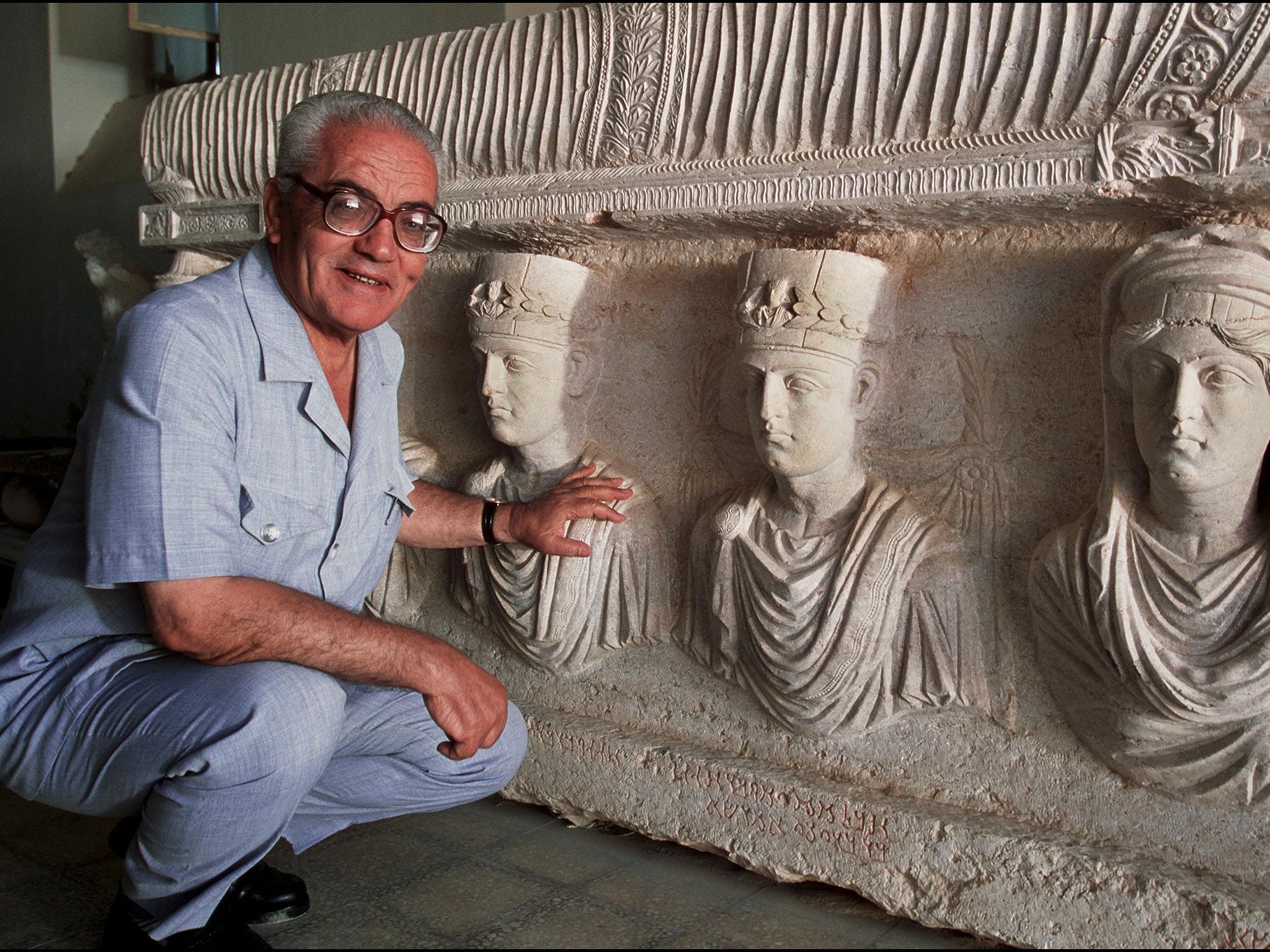Isis executes Palmyra antiquities chief and hangs him from ruins he spent a lifetime restoring
Khaled Asaad, 82, is beheaded by militants outside the museum where he worked for more than 50 years looking after the city's ancient artefacts

Isis militants have tortured and executed the antiquities chief of the ancient city of Palmyra, according to Syrian officials and activists.
A graphic image posted online by Isis-affiliated social media accounts purported to show the decapitated body of 82-year-old Khaled Asaad, his distinctive glasses still placed on his head on the ground.
The head of Syria's department of antiquities said that militants later took Mr Asaad's body from the square where he was executed and hung it from a Roman column in one of the ruins he had dedicated more than 50 years of his life to restoring.
A placard attached to the remains pictured online reportedly claimed Mr Asaad had been killed for overseeing "idols" in the ancient city, attending "infidel" conferences as Syrian representative, and for staying in touch with his brother and with palace officials in the wake of Isis's takeover.
Maamoun Abdulkarim, based in Damascus, said Mr Asaad's family told him the scholar had been held and interrogated by Isis for at least the past month. He said Isis had tried to get information about the city's "treasures" from the expert, without success.

"Just imagine that such a scholar who gave such memorable services to the place and to history would be beheaded," he said. "His corpse [is] still hanging from one of the ancient columns in the centre of a square in Palmyra.
"The continued presence of these criminals in this city is a curse and bad omen on (Palmyra) and every column and every archaeological piece in it."
One of the foremost experts on Palmyra, he published several works in international journals about the city, which was an important trading hub along the Silk Road and still ranks among the finest ancient ruins in the Middle East.
Mr Asaad worked with archaeological missions from the US, France, Germany and Switzerland on excavations at the 2,000-year-old UNESCO World Heritage Site.
Isis overran Palmyra and the neighbouring modern city of Tadmur in May this year.
The militant group was known to have destroyed relics it regarded as "idolatrous" in the past, and some of the city's smaller artefacts were moved to safety as government forces retreated.
It remains unclear how much damage has been done to the ruins since. Isis has previously said it will not destroy the overarching Roman structures - but in June it did blow up two ancient shrines in the city, not part of the Roman-era complex, which militants said were sacrilegious.
Join our commenting forum
Join thought-provoking conversations, follow other Independent readers and see their replies
Comments